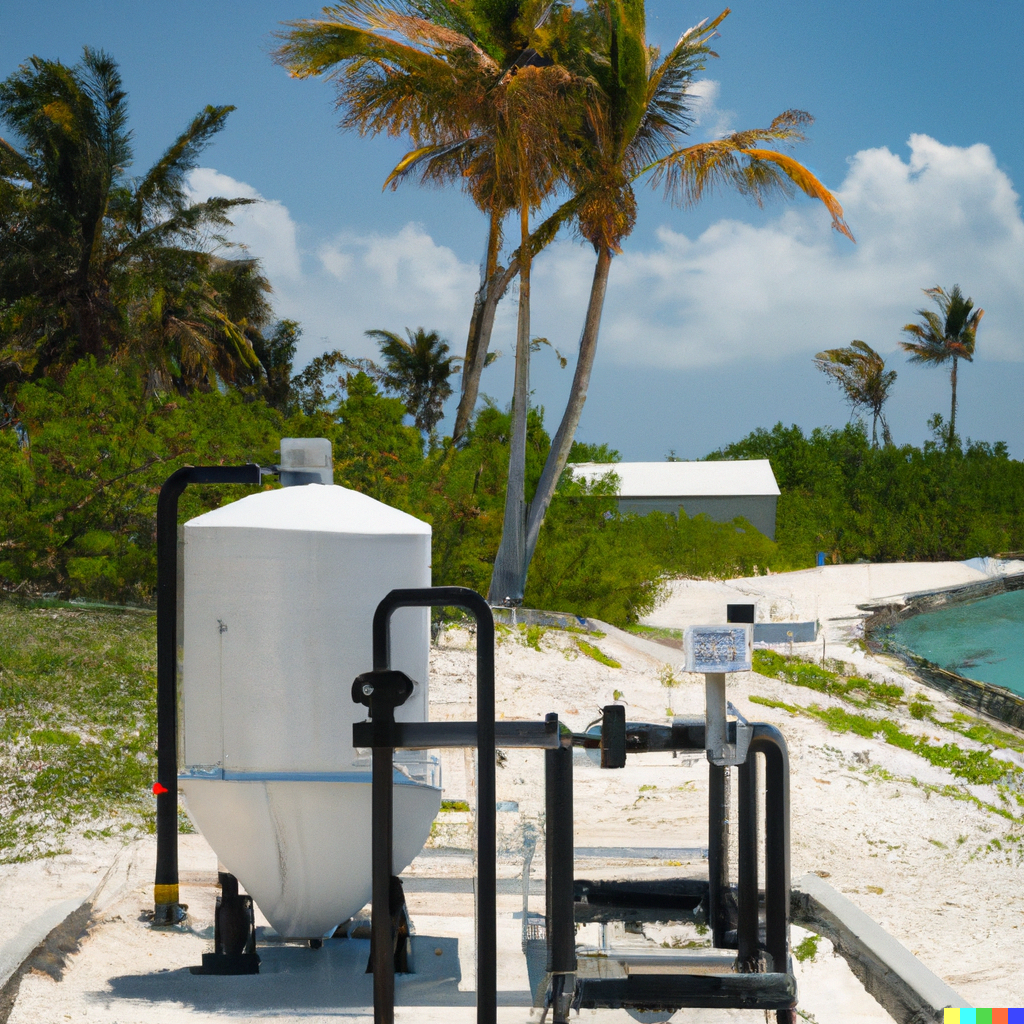Private Island Water Generation
A reverse osmosis (RO) water supply system can efficiently deliver clean, safe drinking water in eco resort developments. Moreover, this technology helps reduce the ecological footprint by transforming raw water sources into a reliable supply for guests and staff.
Raw Water Source Assessment
Carefully assess raw water sources near the eco resort. In some cases, you may rely on seawater alone. In other instances, you can combine seawater with rainwater harvesting or add a bore as a third source. This multi-source strategy diversifies water options and boosts overall system resilience.
Pre-Treatment System
Eco resorts must protect RO membranes by installing a robust pre-treatment system. This initial stage removes impurities and extends the lifespan of the membranes.
Sediment Filters
Sediment filters remove sand, silt, and suspended solids through mechanical filtration. They prevent large particles from damaging downstream components.
Carbon Filters
Carbon filters eliminate chlorine, organic compounds, and certain chemicals that could harm RO membranes. Consequently, the water becomes safer for subsequent treatment steps.
Water Softener (Optional in Anambas)
In areas with high mineral content, a water softener reduces hardness and lowers the risk of scale formation on membranes. However, this may not be necessary in the Anambas region.
Antiscalant Injection
An antiscalant system injects special chemicals to inhibit scale buildup, which helps sustain membrane efficiency over time.
Reverse Osmosis Unit
The RO unit represents the core of the entire water supply system. This stage removes dissolved solids, microorganisms, and other contaminants from the feed water.
RO Membranes
High-quality membranes separate pure water from impurities. You can select the number and capacity of membranes based on desired production rates and the quality of raw water.
Pressure Vessels
Durable pressure vessels house the RO membranes and apply the necessary force to push water through the membranes.
High-Pressure Pump
A high-pressure pump increases the feed water’s pressure to drive it effectively through the membranes. This component directly influences overall production capacity.
Flow Meters and Pressure Gauges
These instruments monitor and control flow rates and pressure levels. They also help technicians detect issues quickly.
Post-Treatment System
After passing through the RO membranes, the water typically requires post-treatment to enhance taste and quality.
Mineralization Unit
If desired, you can add beneficial minerals to improve flavor and deliver health benefits to resort guests.
pH Adjustment System
In some cases, adjusting the final pH level ensures a pleasant and safe drinking experience.
Disinfection Method
A disinfection system—such as ultraviolet (UV) sterilization or chlorine injection—eliminates any remaining harmful microorganisms.
Storage and Distribution
Store the treated water in a clean, food-grade tank that has proper ventilation and secure openings. Because wildlife might seek water sources, ensure the tank’s inlet, outlet, and overflow connections remain inaccessible to animals.
System Sizing
Designing and sizing the RO system demands thoughtful planning.
Water Demand
First, calculate expected water usage in guest rooms, kitchens, and other facilities. Consider both peak and average consumption to determine production needs.
Water Quality
Analyze raw water conditions to identify suitable pre-treatment components. Different sources may require different filtration techniques.
Sustainability
Consider energy-efficient equipment and water-saving measures like low-flow fixtures. Additionally, you can size the system to operate mainly during daylight, which lets you run it directly from solar power without relying on extensive battery storage.
Scalability
Plan for future expansion by designing a system that supports potential resort growth. This approach eliminates costly overhauls when you decide to increase capacity.
For more detailed information on how to unleash investment yield in Anambas check out our Facebook, X and Instagram accounts or check out Kepri Estates YouTube channel. For more information on how to capitalise on this new premium eco resort destination, check out Kepri Estates Private Island FAQ and Services page.

